Originally given as a paper to the Leicester Secular Society, 11 September 2022
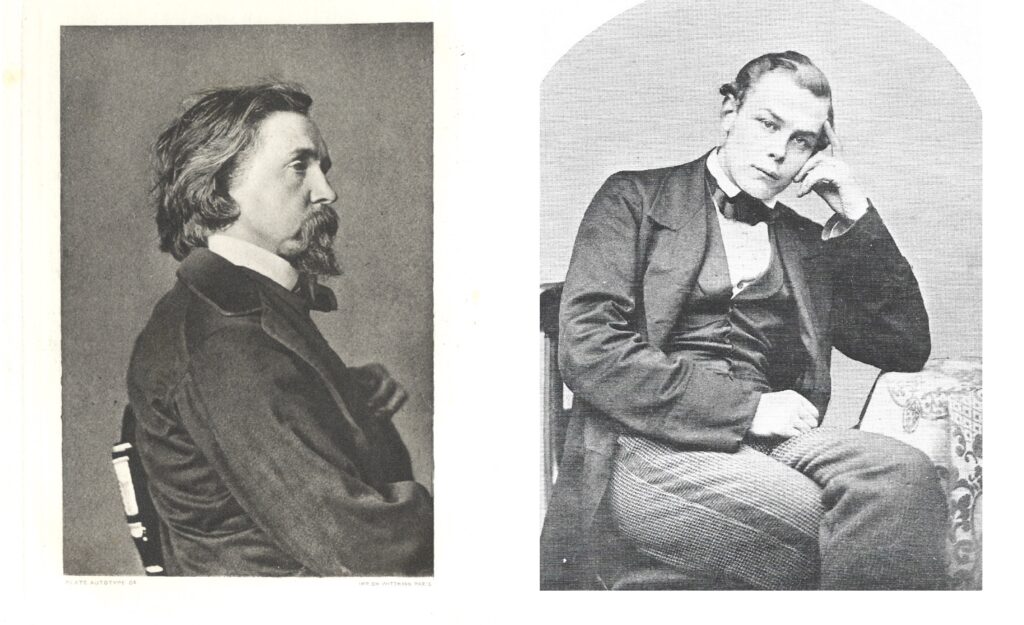
Introduction
Bradlaugh and Holyoake were the two men under whose leadership the Secularist movement was created and shaped. But their reputations, in their lifetimes and since, have suffered mixed fortunes. In this article I shall reassess their historical importance more generally as radicals and as freethinkers. I shall first compare them as leaders of the Secularist movement, and then examine how changing historical perspectives have shaped their posthumous reputations.
Contrasting reputations
Holyoake was the older of the two men, born in 1817. He also lived longer, dying in 1906 – and this is important. Bradlaugh was half a generation younger, born in 1833 and dying at the relatively young age of 57 in 1891. Bradlaugh died when the achievements of his prime years were still fresh in the memory of friends and foes alike. Holyoake died when many of his achievements were half-forgotten, having achieved ‘grand old man’ status. Kind things might be said about him, but he had outlived his usefulness.
When I first studied these men in the 1960s, Bradlaugh was the better-known of the two, largely on account of his struggle to take the Oath of Allegiance when elected to the House of Commons in 1880, which had recently been given scholarly treatment by Walter Arnstein in The Bradlaugh Case (1965). Bradlaugh was also respected and revered as the founding President of the National Secular Society, the centenary of which in 1966 was celebrated by the then-President, David Tribe, in his 100 Years of Freethought (1967), to be followed by his adulatory biography, President Charles Bradlaugh MP (1971). It seemed like heresy within the freethought movement to question the greatness of this undoubtedly great man.
Holyoake, by contrast, was recalled – if at all – through his association with the Co-operative movement, as its much-published historian. The headquarters of the Co-operative Union in Manchester were in Holyoake House; I recall, as a child, that my junior school near the local co-op store was next to a street called Holyoake Terrace. What was known of his freethought past came through footnote references to his first two-volume autobiography, Sixty Years of an Agitator’s Life (1892), followed by his second, even more self-justifying account, Bygones Worth Remembering (1905), many of which were not.
Both men left daughters to defend their reputations; both men left copious archives which I have catalogued; and both men were given friendly biographies within a few years of their deaths – both of which were to some extent written to defend their subject against the actions and views of the other. As an ‘outsider’ to the movement, little did I realise that, when I set out to rediscover ‘George Jacob Holyoake and the Origins of the Secularist Movement’ in 1965, I was entering a polemical minefield as well as a fascinating field of historical study, little-known in the wider world of historical scholarship. Over the next few years I was to receive nothing but kindness and generous help from Bill McIlroy, then secretary of the National Secular Society, and from Nicolas Walter of the Rationalist Press Association, as I proceeded to study first Holyoake and then Bradlaugh.
George Jacob Holyoake (1817-1906)
I. The young Owenite lecturer and educator
Holyoake was born in Birmingham, the son of a skilled workman, and (apart from Sunday School) was educated as a young man at the Birmingham Mechanics’ Institute, where he experienced strong Unitarian influences. He also encountered the ideas of Robert Owen and became a lecturer for the Owenite Association of All Classes of All Nations. The typically sweeping title of this Owenite organisation was also its manifesto. Owenism introduced the young Holyoake to a new moral world of co-operation beyond the narrowing confines of class. Birmingham in the 1830s was a centre of radical political activity, but under the leadership of men like Thomas Attwood and Joseph Sturge it was a radicalism that sought to be a movement of all classes, bridging the gap between working-class and middle-class reformers.
Moderation and a belief that the path to social and political advancement lay through reason and education was at the heart of Holyoake’s early experiences. He was an educator. Three of his early publications in the 1840s can be seen as embodying the trivium of the classical curriculum: Grammar (The Handbook of Grammar), Logic (A Logic of Facts) and Rhetoric (Rudiments of Public Speaking and Debate). He also published Mathematics no mystery; or the Beauties of Euclid. His preference for the title of his later autobiography was Sixty Years of an Educator’s Life, but his publisher (T. Fisher Unwin) thought ‘agitator’ would make the book more saleable.
II. The path to atheism
Little of this moderation was immediately apparent. An attack on the Owenite lecturing structure in 1841, orchestrated by the Bishop of Exeter in the House of Lords, led to the ‘social missionary’ (i.e. Owenite lecturer) in Bristol, Charles Southwell, being prosecuted and imprisoned for blasphemy on account of an attack on the Bible (which he called the ‘Jew Book’) in his unofficial weekly periodical, the Oracle of Reason. Holyoake stepped forward to edit the paper, as much to champion freedom of speech as to maintain Southwell’s extreme views.
Holyoake’s Owenite rejection of Christian theology became embittered by events over the next few years. He was himself prosecuted for blasphemy following a flippant reply to a question about the place of religion in an Owenite community, in which he said the people were too poor to have a God, and he declared himself to be without any religion at all. While he was in gaol for this comment, his elder daughter died.
His rejection of religion was partly intellectual, but it was enhanced by Christian bigotry, hypocrisy and what he described as ‘persecution’. Holyoake was a stubborn man and never wavered from his rejection of religion. Over the years, however, his range of acquaintances and experiences widened; and while the memory of his early treatment at the hands of Christians never faded, some of the bitterness did, and the ‘all classes of all nations’ side to his outlook reasserted itself. Holyoake was a born moderate, yet however accommodating he became in later life towards those with whom he disagreed, and however keen he might have seemed to compromise with the world, he never renounced his atheism. The world eventually had to accept him on his own terms. That he was eventually accepted was as much a sign of the changing times as of the changing Holyoake: he was on the right side of progress.
III. The leader of freethought
Following his imprisonment he enjoyed his reputation, lecturing as a ‘martyr’ to the cause of freethought, but it rapidly became apparent that his forte was writing and organisation. He was not a good public speaker. Having a weak high-pitched voice, he was no orator. His words were stilettos not broadswords, and his witty pinpricks, aimed sometimes as much at rival freethinkers as at the enemies of freethought, irritated many.
His first achievement as an organiser was to gather up the remnants of Owenite branches and bring them together in an organisation to promote freedom of expression and the philosophy of Rationalism, by which he meant Owenism shorn of its discredited communitarian ideas. Out of this grew his two major contributions to radical organisation: the promotion of freethought as an intellectual and civil rights movement, renamed ‘Secularism’, in 1851; and the encouragement of economic co-operation among both producers and consumers, which led to his increasing identification with the ‘Rochdale Pioneers’ (whose history, Self Help by the People, he published in 1858) and the nascent co-operative movement.
IV. Secularism and the Reasoner
This activity was maintained through publication, chiefly a weekly periodical entitled the Reasoner, which he edited from 1846 until 1861. The manifesto issued in the very first number of this octavo periodical remained at its core throughout: ‘Communistic in Social Economy – Utilitarian in Morals – Republican in Politics – and Anti-theological in Religion’. By ‘Communistic’ he meant Owenite Socialism, but with co-operation in the community rather than co-operation in communities; by ‘Utilitarian’, he meant the moral philosophy of Jeremy Bentham as developed by John Stuart Mill, taking the promotion of the greatest happiness of the greatest number as the measure of an ethical life; by ‘Republican’ he meant democratic government of the people, for the people, by the people; and by ‘Anti-theological’ he meant an intellectual rejection of all supernatural explanations of the natural world.
V. Radical politics
Although much of his work in both Secularism and Co-operation grew from his Owenite roots, Holyoake was also active in the wider radical political movement: Chartism at home and republicanism abroad. His emphasis varied according to circumstances, with politics occupying much of his time around 1848 and again in the later 1850s.
During the 1840s he was a Chartist, supporting the democratic movement for the extension of the franchise to all men, but the mainstream National Charter Association led by Feargus O’Connor was not to his taste. O’Connor’s demagoguery and readiness to use the threat of violence were incompatible with Holyoake’s rational and intellectual approach, which favoured building bridges with moderate reformers rather than alienating them. Was this an unprincipled urge to compromise, or strategically sensible? His opponents within the radical and freethought movements thought the former, and detected in Holyoake too great a readiness to be flattered by the company of reformers of a higher social class. One might suggest that he thought himself the better of his equals and the equal of his betters.
VI. Moderating influences
This became clear as Chartism declined after the failure of the Third Petition in 1848. In association with three of the six authors of the original Charter in 1838 (James Watson, Henry Hetherington and Richard Moore) Holyoake was a founder-member of the People’s Charter Union and co-editor with the Mazzinian republican, William James Linton, of a short-lived Chartist newspaper, the Cause of the People. This development was metropolitan in origin and nature, and opposed to the O’Connorite National Charter Association and Northern Star, which drew on nationwide support, especially in the manufacturing districts of the North.
Holyoake undertook provincial lecture tours, mainly at the invitation of former Owenites whom he was organising into what became Secularism after 1851. However, by 1850 he had in fact become a London-based publisher and journalist, with increasing connections to the metropolitan intellectual radicalism of William Henry Ashurst, Robert Owen’s solicitor, whose home at Muswell Hill was a centre of Mazzinian activity; and of W. J. Fox of the Unitarian and Rationalist South Place Chapel. It was here that the radical intelligentsia worshipped – including John Stuart Mill and Professor Frank Newman, brother of the later Cardinal. Collet Dobson Collet, a leading member of the People’s Charter Union, was choirmaster at South Place.
These people and their connections had an undoubted influence on Holyoake; they also helped fund his activities and supplied material for his weekly Reasoner. He in turn wrote for the Leader, a weekly middle-class periodical which ran throughout the 1850s, edited by Thornton Hunt, son of the radical poet, Leigh Hunt.
As Holyoake faced up to the failures of the politics of the 1830s and 1840s and the decline of Owenism and Chartism, he became more compromising and expedient in his strategy, whilst never abandoning his ultimate ideals. But many fellow Chartists and increasing numbers of freethinkers criticised his approach, which they saw as weak and ineffective.
Holyoake collaborated with middle-class and parliamentary radicals, including Richard Cobden and John Bright, in the continuing movement to extend the franchise, repeal the newspaper stamp and advertisement duties – the so-called ‘taxes on knowledge’ – and achieve public secular elementary education. This experience convinced him that this was the way to achieve progress. In addition, through the emerging co-operative movement he learnt he could even work with Christian Socialists. So the philosophy of Secularism evolved, taking its name from the Secular Education movement. As the Reasoner proclaimed at the beginning of 1853: ‘Secularism is the province of the real, the known, the useful, and the affirmative. It is the practical side of scepticism.’ He continued to believe that religious doctrines and theologies were in error, but saw no reason for them to be a bar to his working with people of all faiths and none to achieve practical, secular reforms.
VII. The growth of Secularism in the 1850s
This new approach was not without its critics. However, it began well when attacks by Christian lecturers gave Secularism publicity and brought in wider audiences. For six nights in January and February 1853, Holyoake debated in London with a Congregationalist lecturer, Brewin Grant, the question, ‘What advantages would accrue to mankind generally, and the working classes in particular, by the removal of Christianity, and the substitution of Secularism in its place?’ The event was so successful that it was repeated in Glasgow in February 1854. There the question was, ‘Is Secularism inconsistent with reason and the moral sense, and condemned by experience?’ The circulation of the Reasoner doubled, peaking at around 5,000. The word ‘Secularist’ in Holyoake’s sense entered the English language, and was used in the official Report of the 1851 Census of Religious Worship, published in 1853. In this Report, the masses of non-church-goers were described as ‘unconscious Secularists’, a phrase which Holyoake dismissed as an oxymoron: for him, Secularism was a conscious intellectual choice.
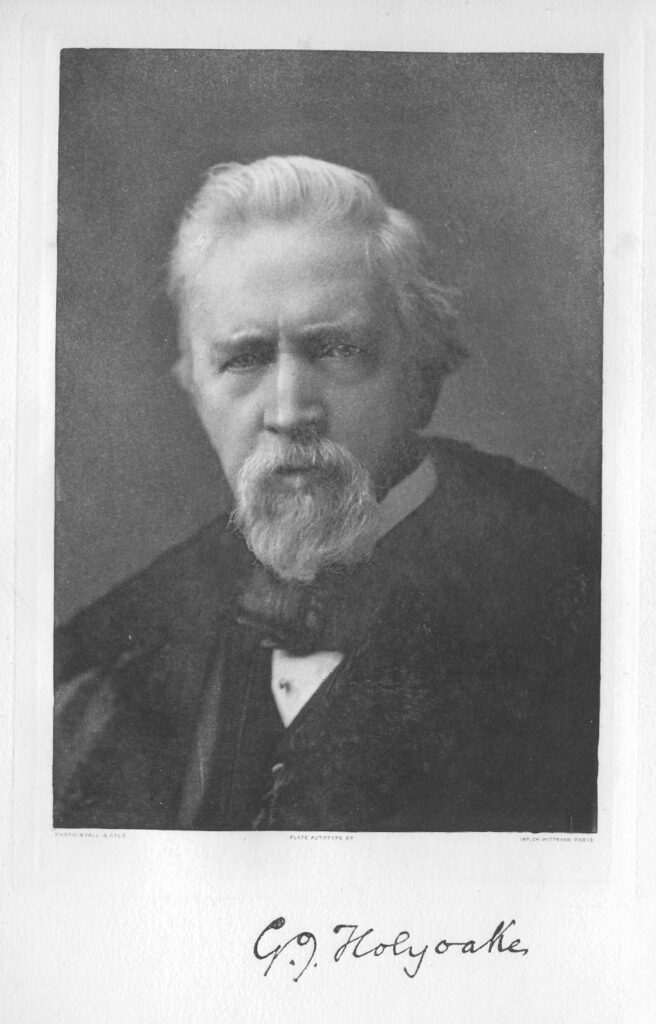
VIII. Faltering leadership
But as fickle public attention switched to other matters, notably the Crimean War, which divided radical opinion, the wider interest in Secularism began to fade and numbers fell. Furthermore, Holyoake was caught up with other concerns, such as the continental struggle for freedom following the defeat of the European Revolutions of 1848-9. These matters consumed an increasing amount of his time, until by 1860 he was almost wholly occupied as acting secretary for the Garibaldi Committee, which organised a volunteer legion to fight with Garibaldi in the liberation of Italy from Austrian rule. As Holyoake’s leadership of Secularism faltered, so his critics became more vocal. The movement to revive the former Owenite branches, which he had started, had grown in areas of former Owenite strength in the textile areas of Lancashire, Cheshire, Yorkshire and the East Midlands. There were over thirty localities reporting societies, and lectures taking place in as many more again, but Holyoake’s leadership was lacking in vigour and popular appeal. He was operating a pressure group for reform; they wanted to fight a campaign.
Enter Charles Bradlaugh
Meanwhile, in the East End of London, an unknown youth was beginning to attract attention. A hostile Christian paper described him in 1850 as:
‘an overgrown boy of seventeen, with such an uninformed mind, that it is really amusing to see him sometimes stammering and spluttering on in his own ignorant eloquence, making the most ludicrous mistakes, making all history to suit his private convenience, and often calling yea nay and nay yea, when it will suit his purpose.’
At the end of the decade, following an erudite lecture on ‘Has man a soul?’ at Sheffield, the local Secular Society secretary reported of this same youth:
‘he stands 6 feet 1, is about 25 years of age & has done terrible execution with both the Bible & the Saints. Ministers of religion … have been so many play things in his hands, he takes no notes & the Sledge Hammer falls heavily sharpened with wit & tempered with eloquence.’
This was Charles Bradlaugh.
Charles Bradlaugh (1833-1891)
I. Early years
Bradlaugh was born in East London in 1833 to lower-middle class parents. He had little formal education and learnt his freethought on the street corners of London. When he left home, he went to lodge with the freethinker Eliza Sharples, relict of the freethought republican publisher and prisoner, Richard Carlile, and their daughters, Hypatia and Theophila. After army service in Ireland, he worked as a solicitor’s clerk. Though never articled, over the years, through extensive reading, he acquired a considerable knowledge of the law. This, when allied to his debating powers, made him a formidable figure in the law courts.
Bradlaugh rapidly became a leader in the Secularist movement, giving new strength to those who found Holyoake weak and ineffective. In 1861 Sheffield invited him to become junior editor of a new paper, the National Reformer. After an interlude of three years from 1863, during which time the editor was John Watts of Bristol, Bradlaugh assumed full control of the paper in 1866, transforming it into a high-class 16-page 2d. review and doubling its circulation in five years to around 6,000.
II. The National Secular Society
In 1866, Bradlaugh also made himself the indispensable founder-president of the National Secular Society. Holyoake had spent years trying to build up the movement nationally as a federation of independent local societies, but failed to establish any stable national organisation. Bradlaugh and Charles Watts cut the Gordian knot in 1866, announcing the formation of a new society, the National Secular Society, with themselves as temporary president and secretary respectively, and promising to call a Conference as soon as 1000 members had been enrolled. Local Societies were subsequently allowed to form branches and enrol their members at a reduced fee.
A few local societies remained wholly independent, but most simply became branches of the NSS. The two most notable exceptions were Leicester and Huddersfield, both societies with strong Owenite roots and a continuing loyalty to Holyoake. For the most part Holyoake was sidelined, confined to sniping from the wings when the occasion presented itself. There were three reasons for this. First, the temperamental differences between the two men; second, intellectual differences over the nature of Secularism and Holyoake’s dismay at seeing his creation bent to the new man’s will; and third, I suspect, Holyoake’s outright jealousy at Bradlaugh’s success.
Bradlaugh and Holyoake compared
The two men were very different. In stature, Bradlaugh was a giant of a man; Holyoake merely average in height and of slight build. Bradlaugh had the loud voice necessary for controlling a large crowd, especially out of doors; Holyoake’s weak voice was not suited to such oratory. Bradlaugh was confident in his opinions, believing himself (usually correctly) to be right; Holyoake appeared more considered, temporising, even evasive, and willing to trim according to changing circumstances over time. Bradlaugh could be ruthless; Holyoake could be irritating.
III. Early setbacks
In the early 1870s, Bradlaugh’s movement was in danger of slipping backwards. He was increasingly involved in politics, and also had personal and financial problems. In 1871 he declined to be nominated as NSS president, and Watts similarly withdrew as secretary. Bradlaugh’s successor, the aristocratic radical Arthur Trevelyan, was no substitute. The NSS became practically defunct, with Bradlaugh and Watts keeping the movement going through their lectures and the National Reformer.
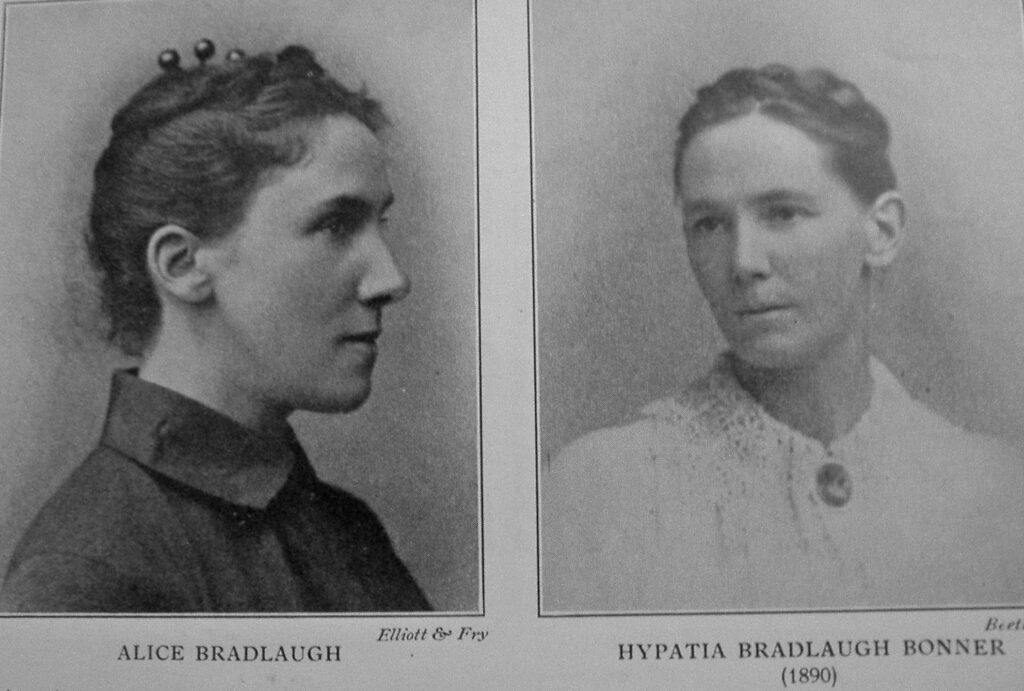
IV. Enter Annie Besant (1847-1933)
A revival began when Watts and Bradlaugh resumed office in 1874, with the latter now totally in control. The opportunity to demonstrate this came in 1876 when a publication advocating birth control by the American, Dr Charles Knowlton, of which Watts was nominally the publisher, was prosecuted. Watts’s wife Kate, the daughter of a Nottingham freethinker, was the ‘leading lady’ in the NSS at that time (Bradlaugh was already separated from his alcoholic wife, who died in 1877). Watts pleaded guilty and both he and Kate were driven out of the movement by Bradlaugh, and a relative newcomer to Freethought, Mrs Annie Besant, took Kate’s place. Annie was the young estranged wife of a clergyman, with a will and energy to match those of Bradlaugh himself. Kate Watts was not the only woman to feel pushed out: the same was true of Bradlaugh’s daughters, Alice and Hypatia, who were then emerging into adulthood as worthy followers and supporters of their father. For the next decade, Annie Besant was to be Charles Bradlaugh’s rock and staff and shield.
V. Bradlaugh and Parliament
Bradlaugh needed this. He had been contemplating a parliamentary career since 1868. Having finally been elected for Northampton in 1880, he suddenly found that the Speaker of the House of Commons would not permit him, as one who had declared his unbelief in God and who therefore thought the oath meaningless, to swear the oath of allegiance and so take his seat. The story of the next six years is well known and not my direct concern here.
During these years of struggle, Bradlaugh exhibited extraordinary legal skill, physical courage and stubborn determination. Again and again, he went back to his constituents to be re-elected, and again and again, he defied the parliamentary authorities to exclude him. The principal opposition came from a minority of Conservative members, who were determined to use the Bradlaugh case to disrupt the legislative programme of Gladstone’s Liberal government. When there was a Conservative government and a new Speaker in 1886, Bradlaugh was permitted to take the oath without question, and was to be a hard-working MP for the next five years.
Not all Secularists were pleased by Bradlaugh’s stand. Holyoake thought an atheist republican should not be fighting for the right to swear a religious oath to the Crown but should have stood on principle for the right of the electors to send whomsoever they wished to the Commons. There was an ironic symmetry here, with the expedient Holyoake standing on principle against the principled Bradlaugh’s expediency.
But the general effect of this parliamentary struggle was to enhance Bradlaugh’s radical credentials. It also raised the profile and membership of the NSS, as well as the circulation of the National Reformer.
VI. Enter George William Foote (1850-1915)
This success was augmented by the decision of a future leader of the next generation, George William Foote, to throw aside his moderate literary approach to freethought and start a new 1d. weekly, the Freethinker, which reverted to the older style of an anti-religious blend of humour and propaganda.
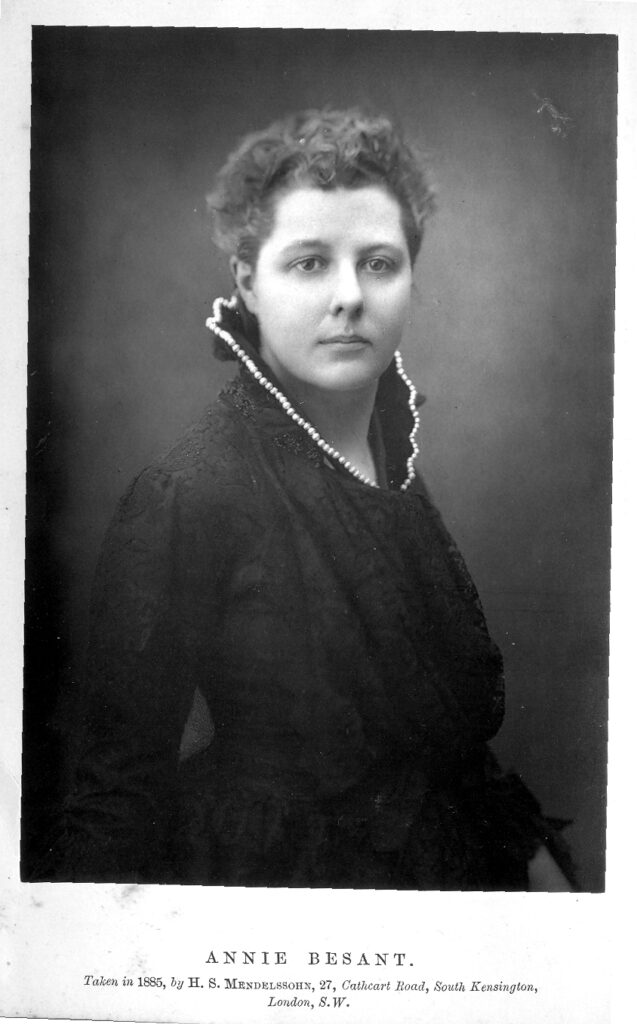
VII. Birth control
In her support for birth control information, Annie Besant was principally interested in the neo-Malthusian control of the population as an answer to the problem of poverty. Bradlaugh agreed, but wished to challenge the prosecution of the Knowlton pamphlet in 1876 on the grounds of freedom of publication. At the same time, he had also long been committed to the publication of guides to sexual knowledge and contraception. As early as 1861 he was championing George Drysdale’s publication, Elements of Social Science, which is more accurately described by its original title of 1854, Physical, Sexual and Natural Religion.
This support for such literature, and more widely for neo-Malthusian economics, separated Bradlaugh both from socialists, who blamed capitalism, not population growth, for poverty, and from Holyoake and his supporters in the Secularist movement, who viewed with horror the undermining of their argument that being without God did not mean being without morals. As usual, by dint of an iron will to make his point – coupled with skilful legal ruses – Bradlaugh succeeded in 1877, rallying the Secularist movement around him and Besant, before going on to further victory in his parliamentary struggle.
All this came at a price. In what should have been his prime of life, Bradlaugh was prematurely aged. He died of kidney disease on 30 January 1891, the same day, appropriately, on which another Charles had met his death in 1649.
Contrasting legacies
These, then, were the two men who created the Secularist movement: George Jacob Holyoake, the originator of the movement; and Charles Bradlaugh, the man who developed it and founded the National Secular Society. Their legacies are as contrasting as their lives.
Holyoake is largely remembered through his own writings for his lifetime of radical agitation, and as the man who encouraged and publicised the spread of consumers’ co-operation throughout Britain and across the world. If his contribution to freethought is acknowledged, it is embodied in the Rationalist Press Association, founded in 1899 by Charles Watts’s son, Charles Albert Watts, with Holyoake as first Chairman. This organisation represented through its publications the educational and rational wing of freethought, closest to Holyoake’s own temperament and outlook.
Bradlaugh is chiefly remembered for his parliamentary struggle, although his legacy organisation, the NSS, still survives. The NSS represents the more campaigning side of freethought, though in the modern humanist movement the two aspects are merging into one. With the decline of Christianity as the dominant cultural force in British society, the need for Bradlaugh’s style of militant atheism has declined. In today’s secular world the attractions of Holyoake’s positive philosophy of Secularism have again become more relevant to a reinterpretation of our current condition, confused as it is by the many cross-currents of a multi-cultural and multi-religious society. In a world of religious contests and conflicts, the secular can hold the common central ground.
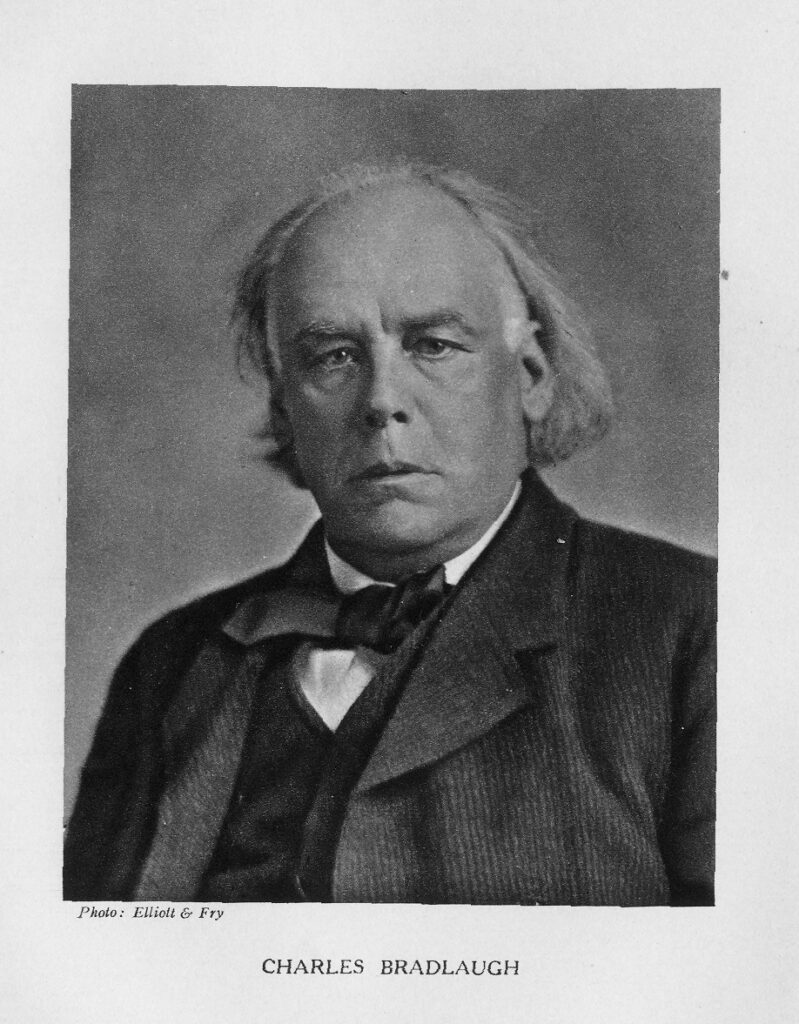
Holyoake and Bradlaugh in recent historical writings
I. Holyoake the champion of the co-operative commonwealth
What is interesting about this revival in the relevance of Holyoake’s approach is the way in which his recent contribution to the co-operative movement has also been reassessed. The first of three volumes by Stephen Yeo on A Useable Past: a history of association, co-operation and education for un-statist socialism in 19th and 20th century Britain, is entitled Victorian Agitator. George Jacob Holyoake (1817-1906): Co-operation as ‘The New Order of Life’. Yeo was Principal of Ruskin College, Oxford (1989-97) and then Chair of the Co-operative College and of the Co-operative Heritage Trust (1999-2015). In his book, published in 2017, Yeo turns to Holyoake for guidance in two major crises of the present day: the crisis of Socialism and the crisis of the Co-operative Movement.
The crisis of Socialism arises firstly from the fact that the Marxism that Yeo once embraced has now been discredited by the collapse of those Communist state powers which annexed it in the first part of the twentieth century. Secondly, the Labour Party in Britain is still searching for an alternative socialist philosophy to the managerial state capitalism of the Fabian founders of Labour.
The crisis of Co-operation comes with the challenge of the big supermarkets (and Amazon) to the ‘Rochdale’ model in a world of consumerist capitalism.
Holyoake’s vision was of a co-operative commonwealth based on secularity, mutual respect and democratic sharing. Yeo finds in this an attractive alternative way forward; his book represents the clearest appreciation of Holyoake’s ethical and philosophical as well as political and economic thinking. The Association of All Classes of All Nations, that Owenite dream mediated by Holyoake, might still be the way forward for a disjointed society and world.
II. Freethought enters the historical mainstream
But if Holyoake the educator is to be taken seriously once more, what of Bradlaugh? Over the past half century since I began work on the Secularist organisations of Holyoake and Bradlaugh, the subject has seen an explosion of scholarly publications, many of them emanating from America. Secularism and Atheism as philosophies, moral systems and personal experiences have been explored and analysed until they have become part of the mainstream of historical and sociological writing.
In Britain we owe a debt to the likes of Callum G. Brown, Professor of Late Modern European History at the University of Glasgow, a social historian specialising in secularisation and Humanism in nineteenth and twentieth century western society. His most recent book is Becoming Atheist: Humanism and the Secular West (2017). We also owe a debt to David Nash, history professor at Oxford Brookes University, who began as my research student and whose first book, based on his PhD thesis, was on the Leicester Secular Society (1992). He has since gone on to publish several works on the history of blasphemy, most recently in 2020, as well as numerous articles.
III. Bradlaugh, the forgotten radical
But there has been no reassessment of Bradlaugh himself. Even the most recent and best biography, Dare to Stand Alone. The story of Charles Bradlaugh, Atheist and Republican by Bryan Niblett (2010), takes the interpretation little further, although it shows a clear understanding and appreciation of Bradlaugh’s legal skills (Niblett is a barrister). What is lacking is a new appreciation among historians who specialise in the wider radical and labour movement of Bradlaugh’s place in their story. An important exception is a book by Matthew Roberts, Political Movements in Urban England, 1832-1915 (2009), where Bradlaugh’s significance in the 1870s and 1880s is acknowledged and integrated into the wider narrative.
Why has Bradlaugh been neglected?
There are good reasons for this general neglect of Bradlaugh as a mainstream radical.
First, Bradlaugh was a Radical in the tradition of Thomas Paine, but he came at the end of that tradition. He was an individualist, suspicious of state power and in favour of low taxation and sound monetary policy. He favoured the world of the small, independent artisan and shopkeeper, who regarded Political Economy as a liberating science – what William Cobbett condemned as ‘Scotch Feelosophy’. As the nature and needs of British society and the economy changed, with the growth of large-scale industrial capitalism, the social problems of urbanisation, and the spread of socialist ideas, this strand of radicalism looked to the past rather than the future. Or if it had a future, it was in the outlook of a Grantham shopkeeper and Margaret Thatcher’s conservatism; or Liz Truss’s path from Liberal Democrat to Conservative. Labour historians did not warm to this style of individualistic radicalism. Bradlaugh did not fit their narrative.
Secondly, historians of the twentieth century, which saw universal suffrage with one person one vote finally accomplished in Britain only in 1948, have been captivated by the study of Chartism, which failed in 1848 but which left a legacy to be picked up by succeeding generations. Bradlaugh was of the next generation, but the narrative told by most mainstream historians has leapt ahead to the rise of political labour and the making of the Labour Party at the start of the twentieth century, with its ideological underpinning of socialism and links with radical Christianity.
On this approach, Bradlaugh lived through an interlude, seen as a time of Liberal hegemony, the era of William Ewart Gladstone. Bradlaugh did not fit this narrative either, except where it bumped into Gladstone’s second ministry between 1880 and 1885. Bradlaugh championed Irish nationalism, but as an atheist did not fit their Catholic narrative; and he championed Indian nationalism, but – unlike Annie Besant – did not live long enough to be part of its rise in the twentieth century. It was a very young Gandhi who attended Bradlaugh’s funeral in 1891.
Thus, whereas Holyoake can now be written back into a narrative of the co-operative commonwealth, Bradlaugh still remains to be interpreted within the broader political history of British radicalism.
Bradlaugh compared with Feargus O’Connor
The great leader of Chartism was Feargus O’Connor. His reputation has grown in recent years as the man who drew together the strands of protest in the anti-poor law and ten-hours movements, and united them with London radicalism to create the most powerful democratic protest movement of the nineteenth century. His tools were a newspaper, the Northern Star, an organisation, the National Charter Association, and a method of popular outreach, the Mass Platform. The latter involved large-scale outdoor meetings addressed by popular orators, who were thereby able to reach those who could neither read newspapers nor afford to join organisations, or could not ordinarily be bothered to do so.
A comparison between O’Connor and Bradlaugh is instructive, but seldom made. O’Connor had the Northern Star as his mouthpiece, with which to publicise himself and his version of Chartism to great effect. The National Reformer was not, after its initial issues, a newspaper at all but a periodical with a far smaller circulation. But on every other count I would argue that Bradlaugh was O’Connor’s superior.
In his maturity he was a better outdoor speaker, powerfully effective without O’Connor’s bluster and demagoguery; he was consequently also able to adapt to be a far better indoor speaker; and he became a master of speaking and operating in the House of Commons, where O’Connor was an abject failure. Bradlaugh’s Parliamentary achievements were considerable. These include his Oaths Act of 1888, which lies at the heart of the parliamentary swearing-in ceremony for a majority of MPs today; and also his hard work on Select Committees and even a Royal Commission.
Bradlaugh, in other words, was a popular orator turned all-round politician. Yet O’Connor – whom Holyoake saw through from the start – is the hero of many historians, while Bradlaugh is almost forgotten. But if I were asked to name the two greatest political platform orators of the nineteenth century, other than William Gladstone and John Bright, I would nominate Charles Bradlaugh and Annie Besant.
Did the politics of the Mass Platform fade after 1848?
The Mass Platform had been developed by Henry Hunt and sanctified by the blood of martyrs at the Peterloo Massacre of 1819. Historians have associated the failure of Chartism in 1848 with the collapse of the Mass Platform.
True, there were many changes in circumstances in the second half of the nineteenth century. The context for the propagation of radical views was changing: the abolition of the Newspaper Stamp in 1855 gave rise to a new popular press, with several papers vying for the national market that the Northern Star had once dominated – notably Reynolds’s News but also the Daily News and even the Liberal Daily Telegraph. The railway network made lectures out of London easier and more frequent. The country was better policed.
Yet mass meetings did continue into the 1850s and beyond. ‘Is it forgotten how many have met at Blackstone Edge, at Skircoat Moor and at Shipley Glen?’ asked the Yorkshire Tribune, A Monthly Journal of Democracy and Secularism for the People, in 1855. ‘It will be so again when we give the call.’ And so it was, in association with the various campaigns from 1858 onwards in support of parliamentary reform. Secularists played a leading part in organising these mass meetings, modelled on the camp meetings of the Primitive Methodists.
Bradlaugh and radicalism
As well as a favoured speaker on these occasions, Bradlaugh (as well as Holyoake) was on the Council of the Reform League. Bradlaugh was one of those who urged the League in 1867 to call the government’s bluff and hold a prohibited meeting in Hyde Park. This proved effective in securing the passage of the Second Reform Bill through the House of Commons, extending the vote to all male householders in parliamentary boroughs.
In the early 1870s, Bradlaugh again took the lead in the anti-aristocratic movements for land reform and republicanism, with local Secularists and NSS branches setting up Republican Clubs. This was one reason why the NSS faltered in these years, as energies were diverted into politics. Then again, and above all, Bradlaugh’s parliamentary struggle in the early 1880s brought him and his NSS to the forefront, with mass rallies in support of their leader and parliamentary reform more generally, which contributed significantly to the passage of the Third Reform Act in 1884. This, together with the Redistribution Act of 1885, extended the adult male vote to all householders. It enfranchised, for the first time, many Secularists and others who lived in small industrial towns and villages, and who were the backbone of the Secularist radical movement.
So when historians look for the reasons why radicalism appeared weak after Chartism, they are asking the wrong question. They have underestimated both the extent to which Holyoake had successfully rallied former Owenites and Chartists in the 1850s, and the extent to which Bradlaugh then led them to greater heights and influence in the 1860s, 1870s and 1880s. Even in the later 1880s, when socialists began to infiltrate and establish clubs in London and elsewhere, their numbers were minute compared with the numbers in London’s radical clubs and Secularist societies in the country.
The Secularists began to lose the initiative only after Bradlaugh’s death. Their strategic mistake was that they had little to offer the trade unions, on whose support socialists were to build a new Labour Party after 1900. By focusing on this alternative labour history, historians have forgotten Bradlaugh.
Conclusion
I would therefore argue that, in their different ways, both Holyoake and Bradlaugh, in addition to their creation and expansion of the Secularist movement, contributed much to the progress of the working class more generally. Their role was central in the co-operative movement and in the promotion of extra-parliamentary radicalism in the second half of the nineteenth century. Instead of dwelling on their personal rivalry and the merits of their differing versions of Secularism, we need to recognise the wider significance of both men. Holyoake’s co-operative star may once more be in the ascendant. Perhaps Bradlaugh’s importance to radicalism may also soon be more widely recognised.
Enjoy this article? Subscribe to our free fortnightly newsletter for the latest updates on freethought.


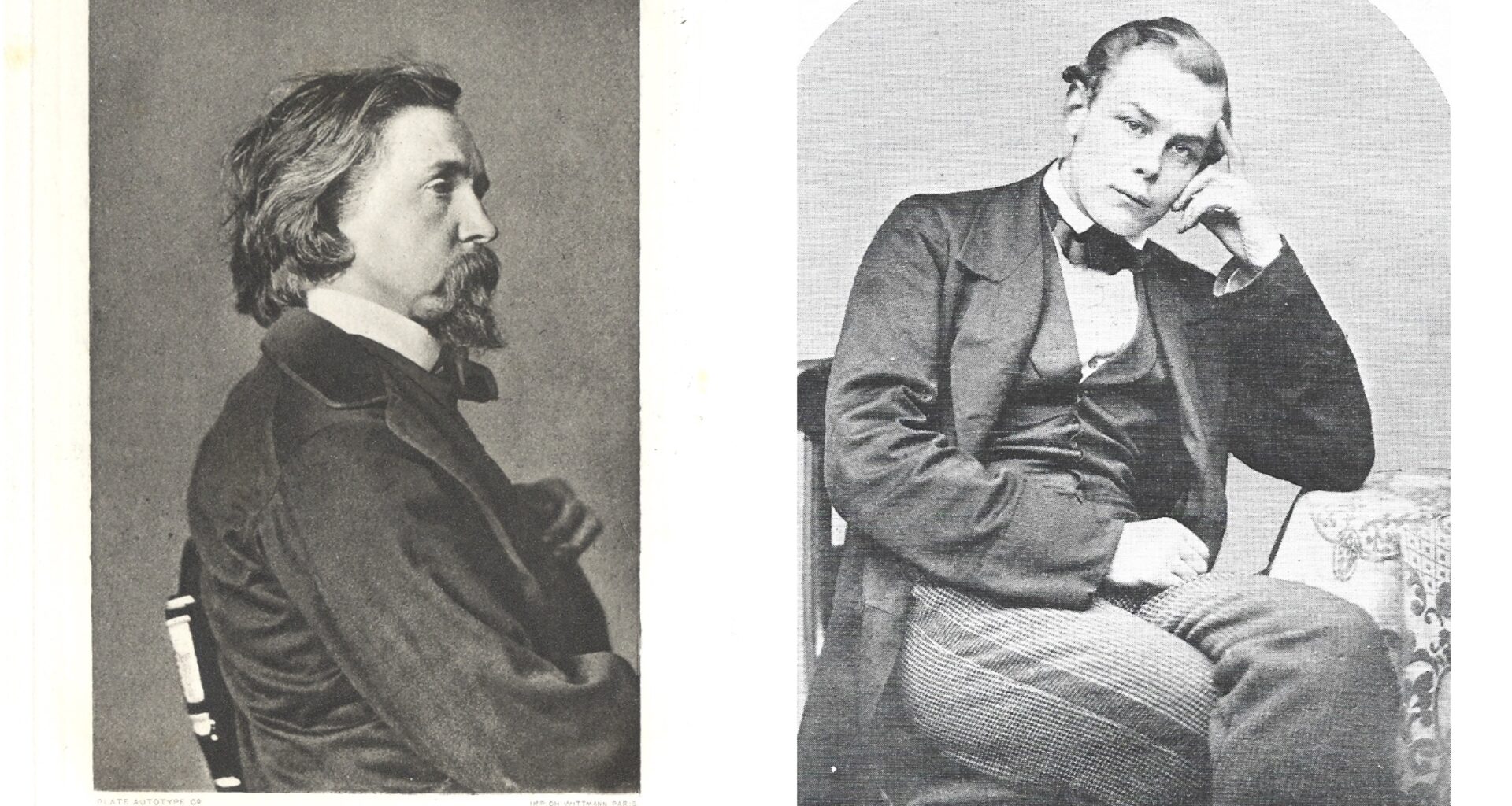
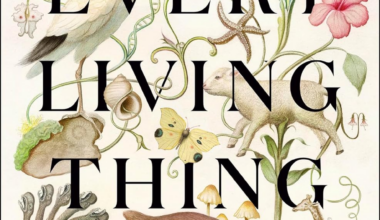
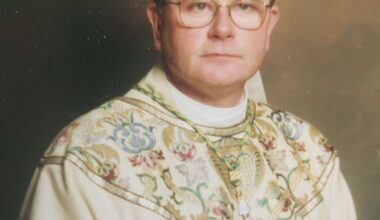


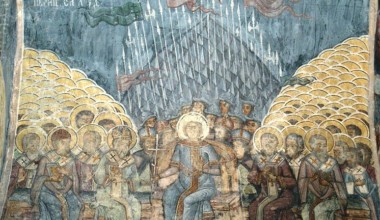
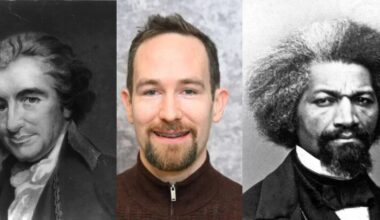
3 comments
It is wonderful to read something from Edward Royle in the Freethinker. While I am willing to be corrected I believe his last contribution to this magazine was in 1982 when Bill McIllroy was editor. Let’s not wait another 40 years for the next article from the person who has done more than any other to record, explain and recognise the contribution of the brave individuals who struggled for improvement in the human conditions under the banner of freethought.
I agree wholeheartedly that Bradlaugh’s place in radical history has been inadequately recognised as his muscular individualism and freethought sits uncomfortably with the collectivist instincts of socialists. Perhaps that, more than anything else, helps explain the tensions between him and G.J. Holyoake and their different understandings of the term ‘secularism’.
wonderful indeed to see this kind of rich historical analysis by such an important expert appear online.
Great article about the two men. I particularly enjoyed the phrase ” There was an ironic symmetry here, with the expedient Holyoake standing on principle against the principled Bradlaugh’s expediency.” Good to see the Freethinker publishing wonderful historical perspectives.
Your email address will not be published. Comments are subject to our Community Guidelines. Required fields are marked *
Donate